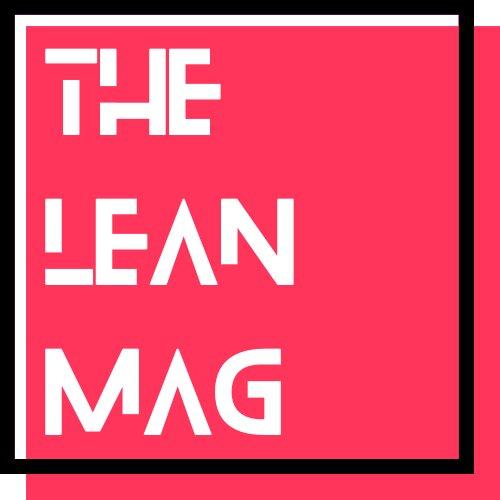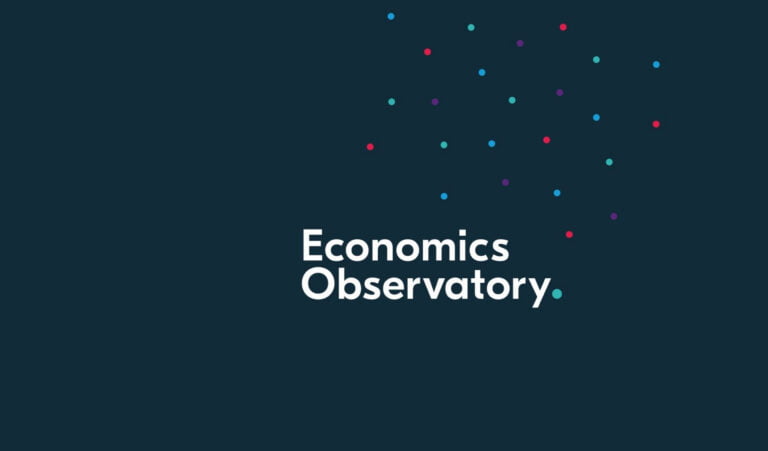Operational Excellence in a Digital World
Traditionally in the Service Industry, Operational Excellence (OpEx) focused on the Operations function: Back and Mid Offices fulfilling the client’s request. Main focus was on decreasing handling and throughput time, with techniques like Lean Thinking, Six Sigma and Scientific Management. The goal was mainly to let humans work more efficiently.
However, in the last years, the Service Industry, such as Banking and Insurance, has been undergoing a Digital Transformation (DX), with ‘old jobs’ being lost at a big rate. In a true DX, Customer Experience is improved using digital techniques, while automating the work. As a result, the ‘good old’ Back Offices are rapidly shrinking and so is the field of OpEx.
So what is the impact of this DX on the OpEx field of expertise? Should we ‘say goodbye’ to the field of OpEx? Forget about Lean, Six Sigma and Scientific Management?
In short: The answer is Yes. And No. Let us explain a bit, starting with a personal case from the Telecom Industry (in cost efficiency evolution 5 years ahead of the Insurance Industry):
“Recently, from my lazy couch with my iPad in hand, I switched my mobile phone subscription from one provider to another. Almost everything was automated, resulting in a lead time and processing time of almost zero. On top of that, as I can fill in everything for myself, how I experience the process as a customer is also becoming increasingly important. With everything automated I am the only human experiencing the process, and it’s faults…”
This small example shows traditional OpEx focus points, like handling and throughput time are completely off the table. No human hands need to work more effective, as there are none working. But there is still a process, which the customer now experiences more directly than ever before. After all, the customer is the only one executing it. So quality now matters even more. And an automated process still has costs, but harder to influence than before, as processes are now fixed in lines of code.
The traditional choice in the Service Industry has become a ‘fool’s choice’. To put it even stronger, the old siloed way of separating Customer, Operations and IT is obsolete. An echo of a ‘paper past’. We need to look at them in a different way, as they jointly create the new digital customer experience.
DX of services leads to rethinking the traditional playing fields of OpEx: Quality, Cost and Delivery. Our strong belief is that DX can empower these fields in such a manner, that Good, Cheap and Fast is the future status quo for the Service Industry. Curious? The coming three paragraphs we will dive deeper into the changes and impact for these fields.
Throughput Time is completely off the table
In our introduction we stated that Digital Transformation (DX) of services leads to rethinking the traditional playing fields of Operational Excellence (OpEx): Quality, Cost and Delivery. With a small example we showed that throughput time, which is a typical indicator of Delivery, is completely off the table today. Let’s dive a little deeper into this evolution.
A thought experiment: “It’s the year 2025 and our customers are no longer waiting for their services, being hand-over from department to department to finally end up with them.”
Then what has become the new ‘biggest wait’? And are there still hand-overs at all?
To start with the waiting, the biggest waiting time is now found in IT change itself instead of business processes fulfilling customer jobs. It may take seconds to process a customer request, but months to change the functionality to handle that same request. Handling now is fully baked into code, lacking the flexibility of old school manual handling.
The change, whatever the size, needs to go through all the usual steps, either in a traditional waterfall or modern incremental setting. So, the art of optimizing should switch from operational processing, towards improving the speed of change. To state it differently, anyone improving companies should now know as much about Agile as he does about Lean.
And then the hand-overs. Obviously there are those in the IT change process, but there’s another interesting one to mention: channel hand-overs. Ever noticed how many channels you actually use to get something done? You start on the general website, try a chat, get a chatbot first, then a person, maybe another one, who then says to send an e-mail, or try the closed environment. For the company, each contact triggers another (small) process.
But for the customer, it’s only a single case. And it’s travelling through channels, all with their own experience, possibilities and limitations. So, the OpEx consultant of the future is not only optimizing the individual processes, but also looks at the channel experience and effectivity for the customer. The thinking behind tools like Customer Journey Mapping is crucial here, as is knowing fields like UX Design.
In conclusion, still lots of improvement to do in a digital company, but definitely in different fields. Next paragraph we’ll look at another original OpEx playfield, Quality, and see what is changing there. Just to give a small hint: both customer and IT are also invited again…
Quality now even matters more
In our introduction we stated that Digital Transformation (DX) of services leads to rethinking the traditional playing fields of Operational Excellence (OpEx): Quality, Cost and Delivery. In our previous paragraph we showed that throughput time is completely off the table in the digital age. Now we explain why and how quality matters even more today.
Quality may be defined as ‘meeting all the explicit or implicit expectations of a product or service by the customer’. In the digital age the customer provides the resources (his data), does the work (data entry) and gets the result from your systems.
But what is quality, when your customer is providing a service to himself via your systems? And probably also checks if it’s done correctly, so maybe the customer should be the quality manager too?
Two words may jump out (again): customer and systems. The process has become an interaction between you and your systems. Then quality in a digital age may not only be about the comma’s and dots in the final result, but about the whole interaction.
The customer interaction is usually not singular: a customer may interact with several channels while getting the stuff done. This series of interactions as a whole is the customer journey. Therefore, in a digital age quality management should focus as much on this journey as it does on the product or the process. As starting point value creation should be designed from the customer perspective and experience.
A real life example: “A website promising a client can get a good discount, so he buys, only to receive a generated email later to read that he is not eligible for discount. And after an annoyed and somewhat stressed search finds out he is eligible on yet another site. The email had not been updated yet…”
So use the good old process to link the interactions in all channels and systems seamlessly together. Check output in all channels for consistency. Make sure the systems perform optimally. And focus on an omnichannel digital journey with the customer in the lead.
There’s one last point we’d like to make: implicit expectations are broader then the product alone. The customer may also (implicitly) expect you to comply to laws, prevent money laundering or simply be in control enough not to go bankrupt…
So quality should always be viewed integrally, not only focusing on the outcome, but also on the way it’s realized (recent public opinion in finance shows what happens if you don’t; bad public opinion does not support sales).
The Cost Game changes forever
In our introduction we stated that Digital Transformation (DX) of services leads to rethinking the traditional playing fields of Operational Excellence (OpEx): Quality, Cost and Delivery. In our previous paragraphs we showed that throughput time is completely off the table, and we illustrated that quality now even matters more. Then what are the implications for the last playing field of OpEx we focus on: Cost? Let’s take a closer look.
“It’s the year 2025 and you are COO, your processes are fully automated and the only human activity in the processes is by our customers themselves. Remember the good old days when you owned your P&L, which consisted of mainly direct costs? Those days are over for good! Staff and IT have taken over your P&L and all costs have become indirect.”
Is there still an operation to improve? And what are the operational costs to focus on?
Manual operation costs decrease drastically due to digitalization and automation. In the Manufacturing Industry this is already a well-known phenomenon, but in the Service Industry many organizations nowadays reach the ‘tipping point’ where system and change costs outnumber manual operation costs. We can say the Cost Game is definitely changing here, but what are the implications of this important shift?
The focus area for cost gains shifts from operations to development and change. Naturally these processes are less standardized and show a higher variety. The development and change processes can be optimized with help of frameworks for Design Thinking, Agile and SAFe. The funny thing is that all these frameworks more or less find their origin in Lean.
In addition, requirements for process design are changing. As system costs are mainly fixed, with some exceptions like license costs, cost gains can be achieved when processes are designed to be easy (both fast and cheap) to adapt. In other words, design processes for agility has become one of the most important design guidelines today.
And all of a sudden scalability becomes key. The most obvious strategies to scale up are commercial growth (via Front Office) and growth through acquisition (via Back Office). OpEx skills and techniques like Lean Thinking, Six Sigma and Scientific Management, traditionally used to let humans work more efficiently in the Mid Office, are today more and more applied to structural increasing sales, acquisition and conversion.
In conclusion, still lots of improvement to do in a digital company, but definitely with major changes in the traditional OpEx playing fields: Quality, Cost and Delivery. But what about the other three traditional playing fields of OpEx, which are easily forgotten and have not been focused on yet: Morale, Safety and Productivity? In our our conclusion we reflect on the introduction and previous paragraphs and end with some Digital Do’s for OpEx in a Digital World…
The playing field changes, the added value remains
In our introduction we stated that Digital Transformation (DX) of services leads to rethinking the traditional playing fields of Operational Excellence (OpEx): Quality, Cost and Delivery. In our three paragraphs we showed that throughput time is completely off the table, we illustrated that quality now even matters more and we described how the cost game changes forever. So we can state there is definitely impact of DX on the OpEx fields of expertise. But what about the million dollar question…
Should we ‘say goodbye’ to the field of OpEx?
In the introduction we already answered in short: Yes. And No. The longer answer is this: The playing field changes, the added value remains. Because of these changes the work of OpEx enters new areas: (1) From optimizing manual processes towards Customer Journey Mapping, optimizing touchpoints and customer experience; (2) From focus on throughput time towards focus on speed of change, improving efficiency of Agile teams and organization; (3) From focus at operations to new challenges like improving commercial performance, acquisition and integration processes.
These changes lead to 10 Digital Do’s for Operational Excellence in a Digital World: (1) Design from customer experience; (2) Use the process to link channels, customer journey and systems; (3) Approach quality integrally; (4) Focus on digitalizing processes; (5) Design for low cost and agile maintenance; (6) Implement change first time right; (7) Get customer feedback and really act on them; (8) Channels and systems are the new gemba, derive data from these to fuel improvement; (9) Focus on linking channel experiences instead of linking process steps; (10) Improve on speed of change.
In the introduction we stated our strong belief is that DX can empower the OpEx playing field in such a manner, that Good, Cheap and Fast is the future status quo for the Service Industry. This means the OpEx professional will have to acquire new skills and will have to evolve cooperation form an enterprise-wide perspective. So we should not say goodbye to the field of OpEx, but invest in new ways to be relevant!
 Koen Boomsma; Operational Excellence Consultant at VIVAT
Koen Boomsma; Operational Excellence Consultant at VIVAT
Koen is a result-driven process- and business-consultant with strong analytical and conceptual abilities and a hands-on mentality. He has broad experience with relentless improvement of quality, cost and customer satisfaction in customer-, business- and change-processes, for ten years at the Rabobank Group and the last three years at VIVAT.
 Stefan Voskuilen; Operational Excellence Manager at VIVAT
Stefan Voskuilen; Operational Excellence Manager at VIVAT
Stefan has a 17-year track record of consulting in the field of process improvement and operational excellence. He has worked across different industries, varying from chemical and steel to insurance and food. His experience lies in process analysis, Lean Thinking, quality assurance, process digitalization and Agile way of working.
 Mathieu van Straaten; COO of Direct Lending at Dynamic Credit
Mathieu van Straaten; COO of Direct Lending at Dynamic Credit
Mathieu’s passion is building for performance. Creating value by improving organizations in all dimensions together with a team of skilled and motivated professionals. He’s inspired by making complex things simple, by supporting people to grow personally and professionally and by realizing the best results possible.







